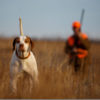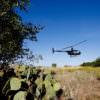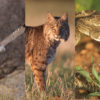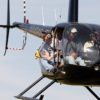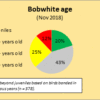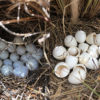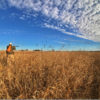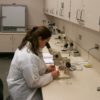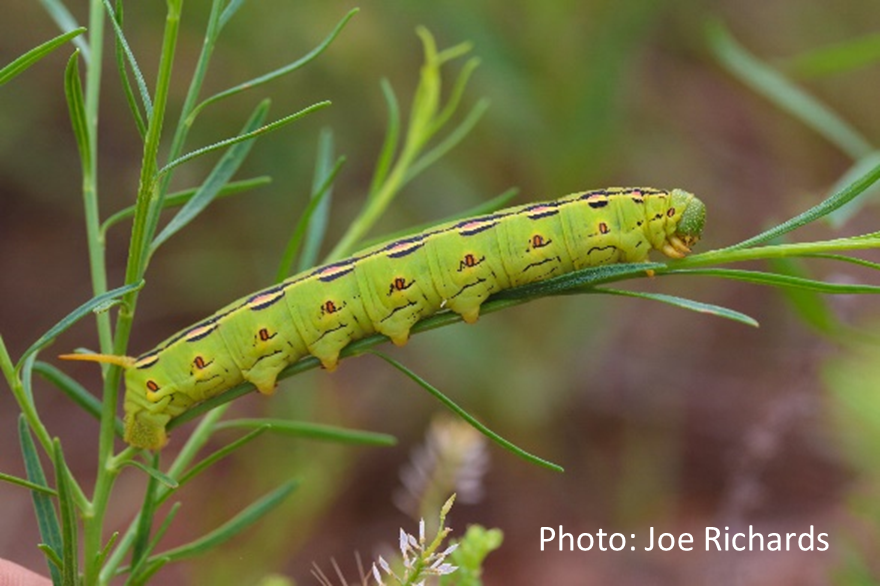
During the first week of May our technicians recorded the first successful nest hatching on the Rolling Plains Quail Research Ranch for the 2024 season. Fingers crossed this is a good omen of things to come.
In the intricate web of nature, every species plays a pivotal role, contributing to the balance and health of ecosystems. Among these, the Bobwhite is a notable species, especially in North America. Renowned for their distinctive springtime calls and ground-dwelling habits, Bobwhites face numerous challenges, notably habitat loss and fragmentation. One critical aspect of their survival, particularly for hatchlings, hinges on the availability of insects.
Insects are indispensable during the early life stages of bobwhite quail, providing essential nutrients that ensure their growth, development, and survival. The first few weeks of life are crucial for hatchlings. During this period, their growth rate is rapid, requiring a high-protein diet to support muscle development, feather growth, and overall physiological functions. Insects are a primary source of this protein. Rich in essential amino acids, lipids, and other vital nutrients, insects provide the dietary foundation that these young birds need. Studies have shown that insect availability directly impacts the growth rate and survival chances of quail chicks. Without an adequate insect diet, hatchlings can suffer from malnutrition, stunted growth, and increased mortality rates.
Bobwhite hatchlings consume a variety of insects, which ensures they receive a broad spectrum of nutrients. Each insect type contributes different nutrients and benefits. Common dietary insects include beetles—rich in protein and fat, essential for energy and growth, ants—although small ants are abundant and provide important amino acids, grasshoppers—high in protein and offer roughage that aids in digestion, and caterpillars—soft-bodied and easy for hatchlings to digest, providing a significant source of protein and fats.
Foraging for insects is not just about nutrition; it also plays a critical role in the behavioral and physical development of hatchlings. As chicks scavenge for insects, they develop essential survival skills such as pecking, scratching, and identifying food sources. These activities enhance their motor skills and contribute to muscle development, preparing them for the demands of adult life. Moreover, foraging encourages exploration and independence, crucial traits for avoiding predators and thriving in their natural habitat.
The relationship between quail chicks and insects extends beyond individual survival, influencing broader ecological dynamics. Insects contribute to the health of the ecosystem by aiding in decomposition, pollination, and serving as prey for various species. Bobwhites feeding on insects, help control insect populations, maintaining ecological balance. This predator-prey interaction ensures that no single insect species dominates, preventing potential damage to vegetation and crops, and supporting biodiversity.
Given the vital role of insects in the survival of hatchlings, conservation efforts must address the factors impacting insect populations. Habitat alteration and/or destruction and pesticide use are primary threats to insect abundance and diversity. As natural habitats are converted to agricultural or urban areas, the availability of insects diminishes. Pesticides, while targeting harmful pests, often indiscriminately reduce beneficial insect populations, directly affecting the food supply for quail hatchlings.
Effective conservation strategies for bobwhite quail must include habitat management practices that promote insect abundance. Practices such as habitat restoration repair native vegetation and natural habitats providing a conducive environment for insect populations to thrive. Implementing integrated pest management (IPM) practices minimizes the impact on non-target insect species, preserving essential food sources for wildlife.
Raising public awareness about the importance of insects in the survival of quail can foster support for conservation initiatives. Educational programs and community involvement in habitat restoration projects can make a significant impact. Additionally, advocating for policies that protect insect habitats and regulate pesticide use can contribute to the broader goal of preserving biodiversity and supporting quail populations. Conservation efforts must prioritize the preservation and enhancement of habitats which support diverse insect populations to ensure the continued survival of Bobwhite quail and the health of the ecosystems they inhabit. – by Dr. Dan Foley III


